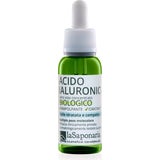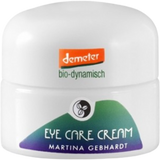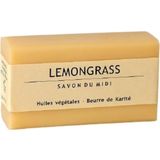EU Restricts Preservatives
The EU has restricted the use of preservatives in cosmetic products, reducing the risk for people with skin allergies and protecting the sensitive skin of toddlers and children. To learn more about which problems arise from the use of preservatives, and what that means for natural cosmetics, keep reading.
As of two weeks ago, methylchloroisothiazolinone and methylisothiazolinone (MCI / MI) are no longer allowed in products that cannot be rinsed off (ie, skin creams). They are still allowed in gels and shampoos provided they are used in small amounts.
In April, two other preservatives were banned by the EU: propyl paraben and butyl paraben. These substances were banned from cosmetic products intended for use as creams for the diaper area for children under 3 years old. As the diaper area is prone to irritation, the skin in this area may be more likely to absorb ingredients than other parts of the body. For other products, the percentage of propyl paraben or butyl paraben allowed to be present may also be reduced.
Naturally, preservatives are necessary ingredients for cosmetics. Without them, some cosmetics would have to be kept in the refrigerator. Additionally, without preservatives, the shelf life of cosmetics would be very short, making the risk of contamination higher.
Many of the substances used for preservation, however, are produced synthetically and therefore can be very aggressive. Preservatives are suspected to be the main cause of allergies and bad reactions. Some preservatives could even be carcinogenic.
True Natural Cosmetics are free of such synthetic materials. In natural cosmetics, other substances are used for preservation.
Today, one of the basic requirements for producing cosmetic products is that they do not contain synthetic preservatives. This creates a high standard of hygiene. Air filters, regular disinfection with steam or alcohol and flawless raw materials keep natural products as germ-free as possible.
As for the preservatives that can be used in natural cosmetics, alcohol, essential oils, propolis or vitamin E are often used. They are intended to prevent the contamination of products.
Many natural cosmetics standards also allow the use of preservatives that are natural but are artificially produced. These substances are indeed reproduced in a laboratory, but have the same molecular structure that occurs in nature - and are therefore chemically identical to natural substances. The type of artificially produced natural preservatives that can be used depends on the standards of the label. A common example is potassium sorbate (INCI = potassium sorbate), a sorbic acid salt which occurs naturally in unripe Rowan berries. This identical-to-nature substance exhibits a very low allergenic potential, which is why it has long been used to preserve food.
All cosmetic products have either an expiration date or a PAO indication (Engl .: the period after opening). The latter specifies how long a cosmetic product can be used after opening without causing harm to the consumer. The PAO is represented with the symbol of an open cream jar. Inside is a number containing the period of durability in months or years.
This specification applies to all cosmetic products that have a shelf life of more than 30 months. All other products have a classic best-before date.
There are also natural cosmetic products that do completely without preservatives or consistency enhancers. Therefore, many of these products need to be shaken before use. It may also happen that these products could change color. This is a natural process which would take place in many cosmetic products if they were free of preservatives. Such changes are not a sign of poor quality but are evidence of the product's naturalness. Within the range of the use by date, such changes are also completely safe and the product can be used safely.
In order to enjoy a natural cosmetic product for as long as possible, here are a few tips: you should store your products in a cool, dry and dark place. You should close them immediately after use and always use clean hands when using products from a pot or jar. Better yet, use a spatula!
Related products
-
 4.5 (1098)
4.5 (1098)La Saponaria Attivi Puri Hyaluronic Acid in various molecular weights, 30 ml
Bestseller- Smooths & firms the skin
- Anti-aging effect
- Use as is or blend with other mixtures
£9.65 (£321.67 / l)Delivery by January 05
-
 4.2 (2491)
4.2 (2491)Martina Gebhardt Eye Care Cream, 15 ml
Bestseller- For sensitive, mature & dry skin
- Firming & moisturising
- Smooths fine lines
£16.30 (£1,086.67 / l)Delivery by January 05
-
 4.7 (291)
4.7 (291)lavera Complete Care Fluoride-Free Toothpaste, 75 ml
Bestseller- Prevents dental plaque
- Protects the gums
- For a fresh & clean feel
£3.15 (£42.00 / l)Delivery by January 05
-
 4.4 (818)
4.4 (818)Savon du Midi Shea Butter Soap, Lemongrass (100 g)
Bestseller- Available in a variety of fragrances
- Made in Provence
£2.70 (£27.00 / kg)Delivery by January 05
Magazine Articles:
-
Great Britain: Free standard delivery from £69.90
-
Free
returns -
Get at least 1 free sample
per order More than 19.350 products

